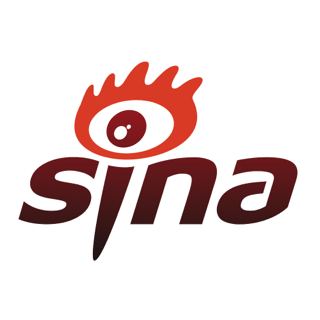转自:复星医药
研究前沿
-酸相关疾病治疗
胃食管反流病(GERD)和消化性溃疡(PU)的发展史
最初认识到酸与食管疾病的相关性需要追溯到1804年,1934年Winkelstein进一步明确胃灼热与酸反流和反流性食管炎是相关的,反流性食管炎这一术语到1950年才终被确认。1958年和1996年GERD进一步囊括了非糜烂性食管炎和巴雷特食管1-2。目前GERD已经被广泛接受为一种心身疾病3。对PU的认识经历了无酸无溃疡,无幽门螺杆菌无溃疡和药物与溃疡具有相关性的重要阶段4-7。
抑酸药物H2受体拮抗剂(H2RA)、质子泵抑制剂(PPI)和钾离子竞争性酸阻滞剂(P-CAB)的出现分别推动了GERD和PU的治疗进展。
GERD和PU的抑酸达标要求
反流性食管炎治疗的抑酸达标要求为 pH>4 的每日维持时间大于18h,消化性溃疡治疗的抑酸达标要求为 pH>3 的每日维持时间大于18h8。有研究发现,反流性食管炎愈合患者胃内 pH>4 每日维持时间显著长于未愈合患者;pH控制与胃灼热和胃反流的症状严重程度评分之间存在显著负相关9。一项研究比较了十二指肠溃疡患者中抑酸药的抑酸效力与4周溃疡愈合之间的关系,明确了胃酸分泌的抑制作用与十二指肠溃疡患者的4周愈合率之间存在正向线性关系10。
H2RA的抑酸疗效与治疗不足
H2RA对于 pH>3 和 pH>4 的达标维持时间分别为11h和6h,且治疗达28天时表现出抑酸效力的明显降低11。临床研究显示,消化性溃疡患者使用H2RA治疗4周的初始溃疡愈合率为60-80%,停药后1年的复发率为80%,维持治疗1年仍有30-35%的复发率;反流性食管炎患者使用H2RA治疗8周的粘膜愈合率仅为50-75%,复发率达80%,维持治疗6个月的复发率达40-89%12-14。
PPI的抑酸疗效与治疗不足
PPI对于 pH>3和 pH>4的达标维持时间分别为17h和13h11,且PPI的使用者普遍存在夜间酸控制不佳,约74%存在夜间酸突破现象15,16。一项纳入7635名反流性食管炎(RE)患者的meta分析显示,PPI治疗12周的平均黏膜愈合率仅为83.6%17。一项日本的多中心真实世界研究,纳入了541例内镜确诊为RE且接受PPI治疗≥8周的患者,PPI治疗的平均愈合率仅为61.6%18。
新一代P-CAB盐酸凯普拉生片(商品名:倍稳®)的抑酸疗效与治疗优势
盐酸凯普拉生片(商品名:倍稳®)在维持抑酸达标上实现了进一步的提升。在健康受试者中盐酸凯普拉生片(商品名:倍稳®)连续给药7天后,20mg 剂量组和40mg 剂量组受试者中,24 小时内 pH>3 的时间百分比分别为99.6%和100.0%;pH>4 的时间百分比分别为98.3%和100.0%;pH>5 的时间百分比分别为97.4%和100.0%19。
在随机、双盲、多中心的III期反流性食管炎试验中,患者接受20 mg盐酸凯普拉生片(商品名:倍稳®)或30 mg兰索拉唑,每日一次,持续4-8周。在全分析集中(FAS),主要终点盐酸凯普拉生片(商品名:倍稳®)和兰索拉唑治疗8周经内镜证实的粘膜愈合率相似(P=0.081)(分别为95.8%和89.9%;组间差异5.8%,95% CI:−0.6%-12.3%)。在符合方案集(PPS)中,盐酸凯普拉生片(商品名:倍稳®)组的粘膜愈合率显著高于兰索拉唑组(分别为99.1%和92.7%;组间差异6.1%,95% CI:1.1%-11.2%)(P=0.018)20。
随机、双盲、安慰剂对照、多中心III期十二指肠溃疡试验,纳入经内镜检查证实患有活动性十二指肠溃疡的中国成年人,口服盐酸凯普拉生片(商品名:倍稳®)20 mg,每日1次,持续≤6周或口服兰索拉唑30 mg,每日一次,持续≤6周。在FAS集中,治疗6周时(主要终点)十二指肠溃疡的愈合率分别为94.4%和93.3%(组间差异1.19%,95%CI:–4.0%至6.5%);在PPS中,6周时的溃疡愈合率分别为98.2%和97.6%(组间差异为0.6%,95%CI:–3.1%至4.4%)21。
编码:NP-MA-2023-03-16-CN-AVA-087
参考文献:
1. Modlin, Irvin M et al. “Gastroesophageal reflux disease: then and now.” Journal of clinical gastroenterology vol. 38,5 (2004): 390-402. doi:10.1097/00004836-200405000-00002.
2. Dent, J. “Review article: from 1906 to 2006--a century of major evolution of understanding of gastro-oesophageal reflux disease.” Alimentary pharmacology & therapeutics vol. 24,9 (2006): 1269-81. doi:10.1111/j.1365-2036.2006.03122.x
3. 牛小平,吴万春,韩真.医学模式的转变与胃食管反流病的思考[J].医学与哲学(临床决策论坛版),2008,No.351(02):67-68.
4. Fatović-Ferenčić, Stella, and Marko Banić. “No acid, no ulcer: Dragutin (Carl) Schwarz (1868-1917), the man ahead of his time.” Digestive diseases (Basel, Switzerland) vol. 29,5 (2011): 507-10. doi:10.1159/00033438
5. 袁耀宗,钱爱华.喜迎《中华消化杂志》创刊40周年回眸酸相关性疾病治疗发展[J].中华消化杂志,2021,41(2):73-75.DOI:10.3760/cma.j.cn311367-20201217-
6. Tarnawski A,Stachura J,Krause WJ,et al. Quality of gastric ulcer healing: a new,emerging concept[J]. J Clin Gastroenterol,1991,13 Suppl 1: S42-S47.
7. Roth, S H. “NSAID gastropathy. A new understanding.” Archives of internal medicine vol. 156,15 (1996): 1623-8.
8. 李瑜元.酸相关疾病治疗的抑酸水平及药物选择[J].中华消化杂志,2001(11):1-2.
9. Katz, P O et al. “Relationship between intragastric acid control and healing status in the treatment of moderate to severe erosive oesophagitis.” Alimentary pharmacology & therapeutics vol. 25,5 (2007): 617-28. doi:10.1111/j.1365-2036.2006.03235.x
10. Rune, S J. “The relationship between acid reduction and rate of ulcer healing.” Scandinavian journal of gastroenterology. Supplement vol. 155 (1988): 12-5. doi:10.3109/00365528809096273.
11. Earnest, D L, and M Robinson. “Treatment advances in acid secretory disorders: the promise of rapid symptom relief with disease resolution.” The American journal of gastroenterology vol. 94,11 Suppl (1999): S17-24. doi:10.1016/s0002-9270(99)00658-9.
12. Schubert, M.L., H2-Receptor Antagonists, in Encyclopedia of Gastroenterology, L.R. Johnson, L.R. Johnson^Editors. 2004, Elsevier: New York. p. 395-401.c
13. Kohn, A et al. “Maintenance treatment with H2 receptor antagonists for duodenal ulcer disease: toward a rational use.” Digestive diseases (Basel, Switzerland) vol. 11,4-5 (1993): 228-38. doi:10.1159/000171415.
14. Hamamoto, Naoharu et al. “Comparative study of nizatidine and famotidine for maintenance therapy of erosive esophagitis.” Journal of gastroenterology and hepatology vol. 20,2 (2005): 281-6. doi:10.1111/j.1440-1746.2004.03546.x
15. Katz, P O et al. “Review article: acid-related disease--what are the unmet clinical needs?.” Alimentary pharmacology & therapeutics vol. 23 Suppl 2 (2006): 9-22. doi:10.1111/j.1365-2036.2006.02944.x。
16. Katsube, T., et al., Helicobacter pylori infection influences nocturnal gastric acid breakthrough. Aliment Pharmacol Ther, 2000. 14(8): p. 1049-56.
17. Chiba, N et al. “Speed of healing and symptom relief in grade II to IV gastroesophageal reflux disease: a meta-analysis.” Gastroenterology vol. 112,6 (1997): 1798-810. doi:10.1053/gast.1997.v112.pm9178669.
18. Higuchi, Kazuhide et al. “Is proton pump inhibitor therapy for reflux esophagitis sufficient?: a large real-world survey of Japanese patients.” Internal medicine (Tokyo, Japan) vol. 52,13 (2013): 1447-54. doi:10.2169/internalmedicine.52.0349
19. Jiangsu Carephar Pharmaceutical. Keverprazan hydrochloride tablets: Chinese prescribing information [Chinese]. 2023.
20. Chen, Songfeng et al.“The efficacy and safety of keverprazan, a novel potassium-competitive acid blocker, in treating erosive oesophagitis: a phase III, randomised, double-blind multicentre study.” Alimentary pharmacology & therapeutics vol. 55,12 (2022): 1524-1533. doi:10.1111/apt.16959.
21. Tan N, Miao X, Liao A, et al The efficacy and safety of keverprazan (H008) in the treatment of duodenal ulcer: a multicentred, randomized, double-blind, active-control trial in China (abstract no. P0098). In: 30th United European Gastroenterology Week 2022.

